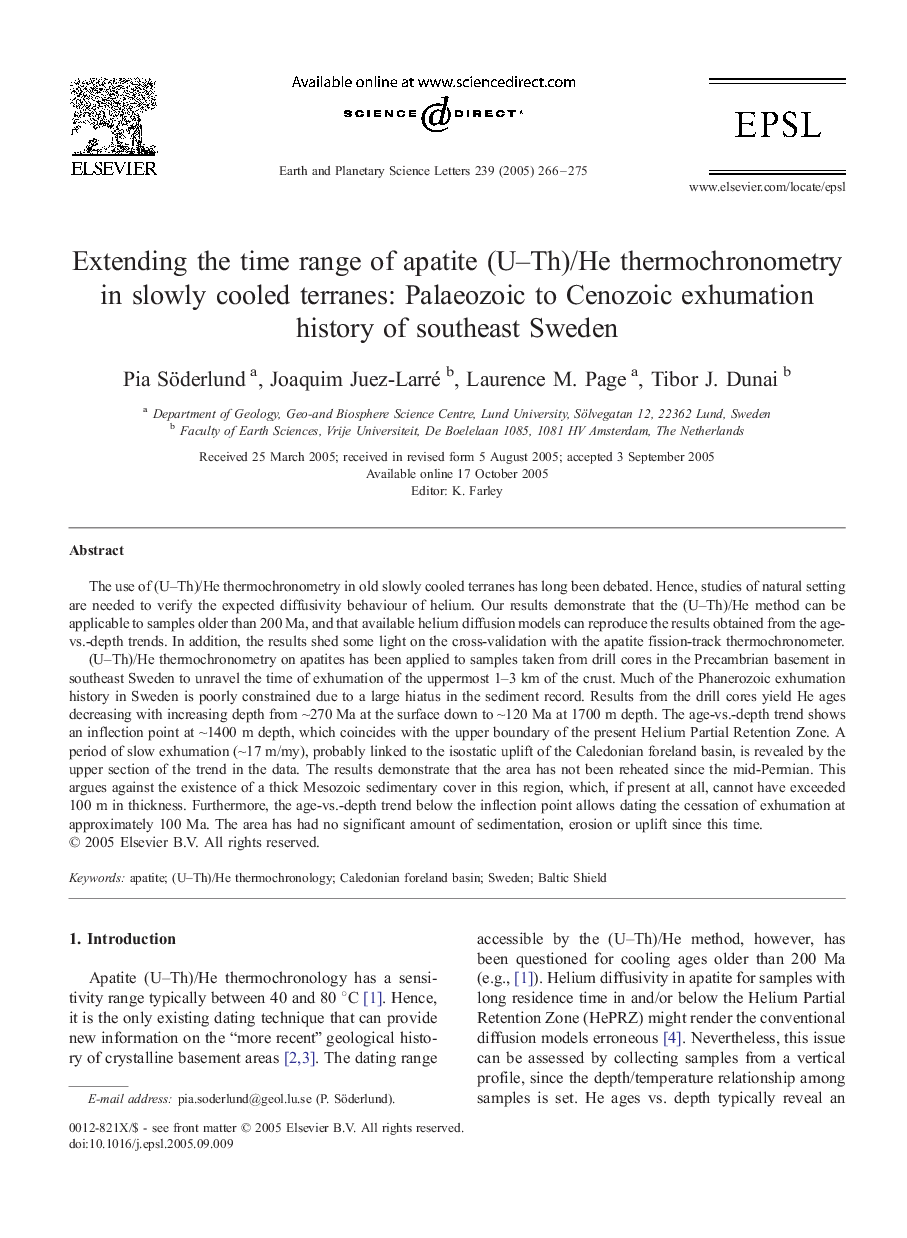| Article ID | Journal | Published Year | Pages | File Type |
|---|---|---|---|---|
| 9522397 | Earth and Planetary Science Letters | 2005 | 10 Pages |
Abstract
(U-Th)/He thermochronometry on apatites has been applied to samples taken from drill cores in the Precambrian basement in southeast Sweden to unravel the time of exhumation of the uppermost 1-3 km of the crust. Much of the Phanerozoic exhumation history in Sweden is poorly constrained due to a large hiatus in the sediment record. Results from the drill cores yield He ages decreasing with increasing depth from â¼270 Ma at the surface down to â¼120 Ma at 1700 m depth. The age-vs.-depth trend shows an inflection point at â¼1400 m depth, which coincides with the upper boundary of the present Helium Partial Retention Zone. A period of slow exhumation (â¼17 m/my), probably linked to the isostatic uplift of the Caledonian foreland basin, is revealed by the upper section of the trend in the data. The results demonstrate that the area has not been reheated since the mid-Permian. This argues against the existence of a thick Mesozoic sedimentary cover in this region, which, if present at all, cannot have exceeded 100 m in thickness. Furthermore, the age-vs.-depth trend below the inflection point allows dating the cessation of exhumation at approximately 100 Ma. The area has had no significant amount of sedimentation, erosion or uplift since this time.
Related Topics
Physical Sciences and Engineering
Earth and Planetary Sciences
Earth and Planetary Sciences (General)
Authors
Pia Söderlund, Joaquim Juez-Larré, Laurence M. Page, Tibor J. Dunai,
